Collecting and drying herbs, seeds, and flowers is joyous work that makes the most of a garden's generous bounty, bringing sensorial and flavourful delights to the kitchen and to the table.
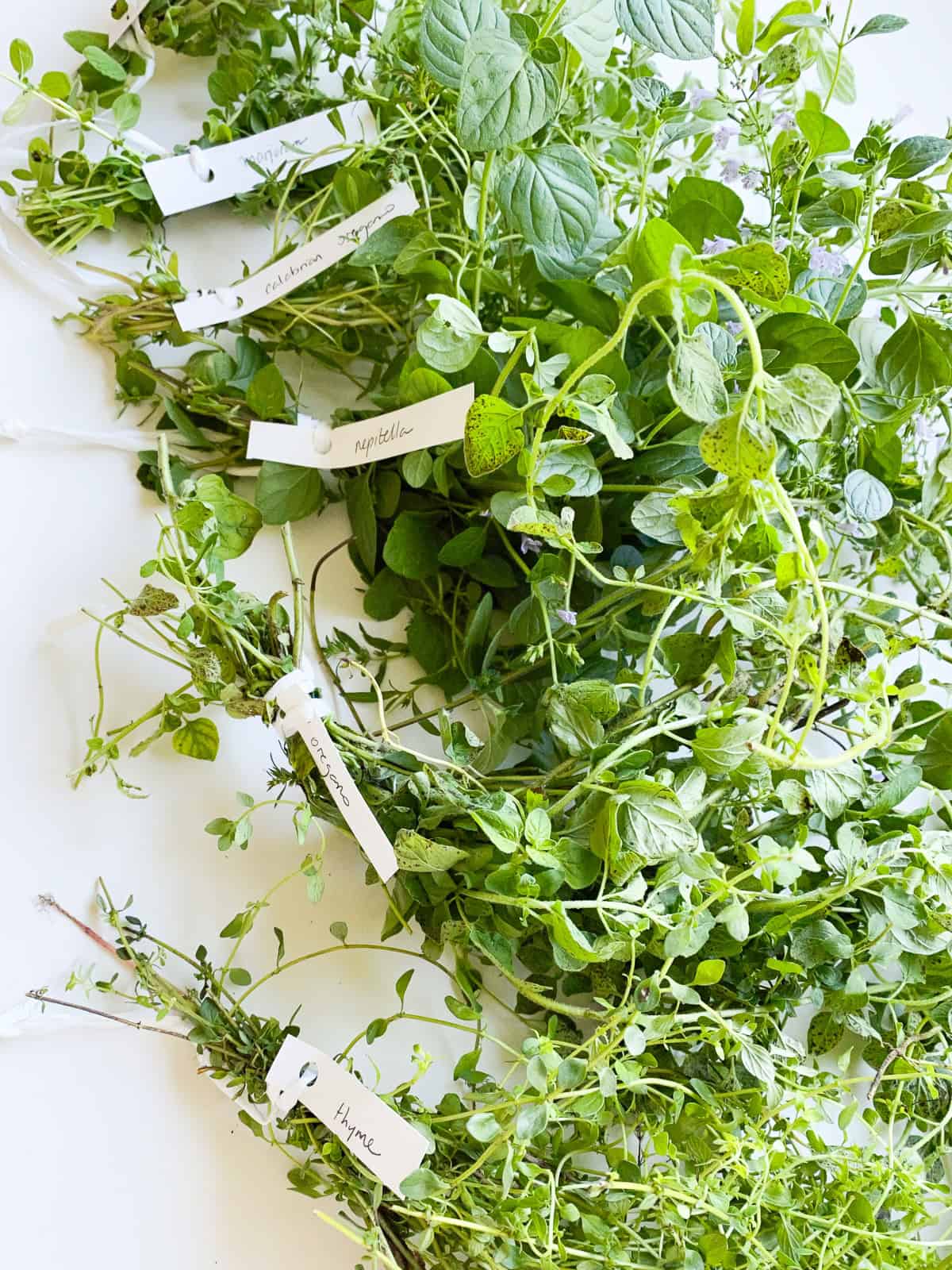
Jump to:
A time honoured tradition
I won’t easily forget the first year I collected my tiny harvest of coriander seeds, after much of the cilantro leaves had been previously harvested. As I picked the dried seeds from their stalks, my mind turned to all the growers who had performed the same task I was completing, for millennia before me. I found myself enjoyably noticing how plain and unassuming the dried seeds looked, knowing how piquant, earthy, and striking the flavour of ground coriander seed truly is.
The time it took to collect and pick out the dried seeds wasn’t too long in the end, and I saved my small treasure, probably just a few tablespoons in all, to make an Ottolenghi dish for a special family meal. I revelled in the alluring, sweet, and spicy fragrance of the toasting seeds as I prepared them for the recipe, and noted the feeling of quiet satisfaction I experienced as I ate the dish, knowing where the spice I had used came from, how it was grown and collected, and revelling in the fact that I had done so myself; perhaps small moments and small pleasures in the scheme of life that nonetheless add up to life well lived.
Why dry herbs, seeds, and flowers?
There is something just so incredibly satisfying about preparing a meal and just popping out into the backyard with a small basket and a pair of scissors, to clip a selection of fresh herbs that will be used moments from when they were picked. Having access to fresh herbs makes it much easier to incorporate them into any meal, instead of waiting to buy a bunch of something from the greengrocers or supermarket.
However, the zeal to grow and use fresh herbs also presents its own tasty dilemma; there is usually just too much to use in a season ! Even a small purchased seedling can turn into an oppressive bounty that stymies even the most tenacious cook. One year, just one single shiso plant turned into something almost monstrous in its bounty, over generously providing me with more leaves than I could use even if I cooked with them every single day (which I don’t!).
The antidote to this most welcome, if sometimes vexing, challenge is to use one of a number of methods of herbal preservation to save your harvest for use throughout the year. Especially for those residents of locales where the colder months do not allow fresh herbs to survive outside, drying fresh herbs, edible seeds, and edible flowers provides the delicious taste of sunnier climes.
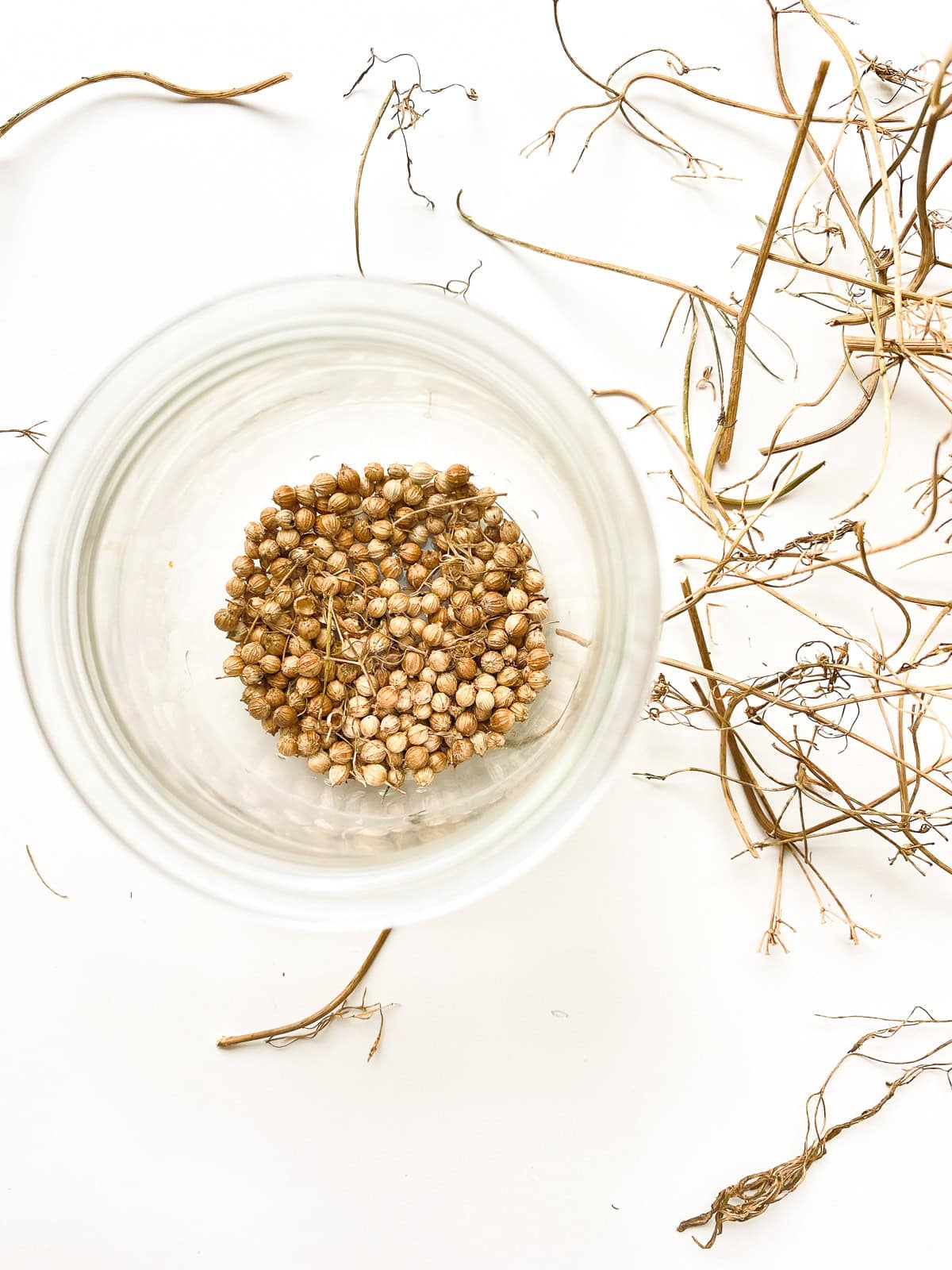
Well after the soft cilantro leaves have been harvested, delicious and pungent coriander seeds can be collected and dried as part of your own homegrown spice collection.
The pleasures of drying herbs, seeds, and flowers
You would not be remiss in thinking, do I really have time to collect and dry my own herbs? I myself have even fallen into this thinking trap, when overwhelmed by masses of herbs I know I will regret wasting, either from my own garden or leftover from store bought, yet still feeling that dealing with the situation will take too much time.
What continues to entice me to repeat this process every year are the pleasures of preserving my garden's bounty. As I slow down and appreciate the very herbs I have worked so hard to select and grow, a kind of herbal mindfulness presents itself. As I sort through dried coriander or dill seeds, pick the petals from edible flowers, or wrap fragrant bundles of fresh green herbs I find myself enveloped in sweet, spicy, and perfumed fragrances, just one of the multiple reasons why it is worth drying herbs, seeds, and flowers.
What seemed like too much time at the outset turns out to be a gift to one’s self, a chance to quiet a busy mind, to allow the senses to really turn on, and to prepare something that will help to nourish myself and and my family in the times ahead, if only in the small gifts of flavour and novelty that herbs, seeds, and flowers impart.
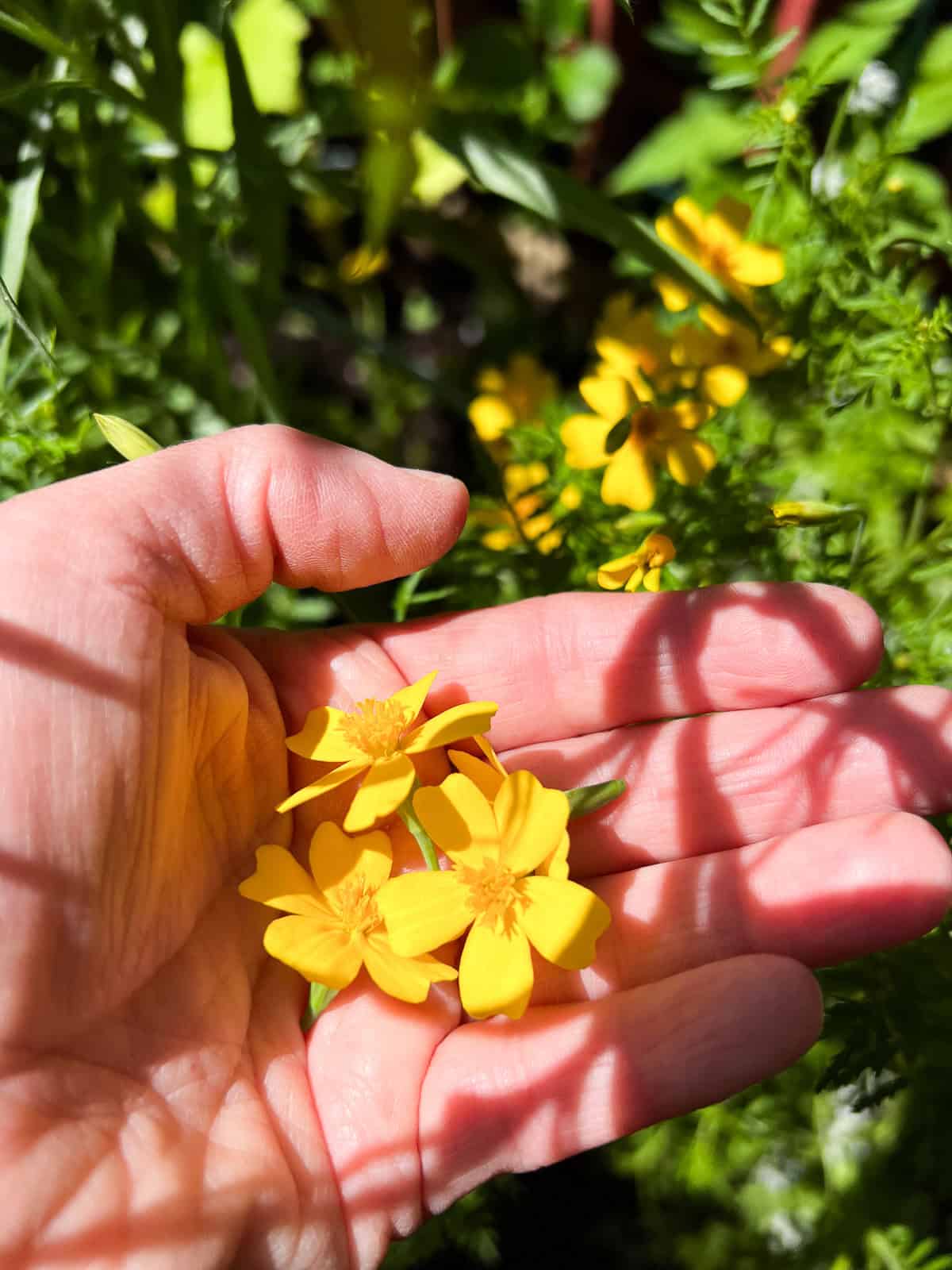
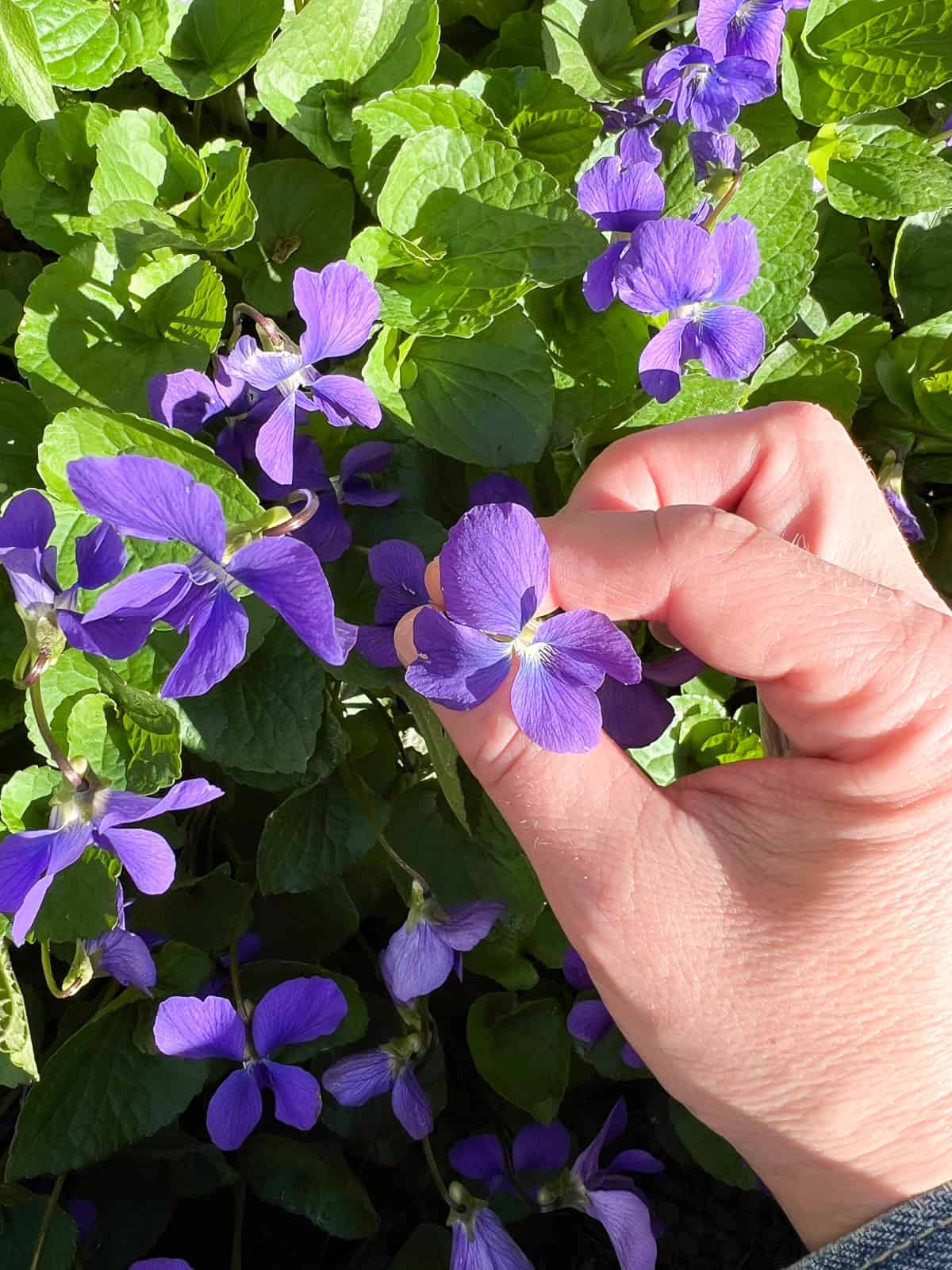
Picking fragrant flowers is a joy in and of itself, and once the little flowers are dry, they add irresistible colour and charm to edible dishes.(Calendula left, wild violet right).
Dried herbs, seeds and flowers in the kitchen
I love experimenting with different kinds of herbs, and with limited urban growing space, I can’t possibly grow every herb I love or want to grow every season. Drying a harvest of certain herbs one year allows me to continue to enjoy their flavours in dried form after the season is over, while allowing me to diversify my planting the following year. Having a small supply of herbs on hand, both familiar and novel, makes for enjoyable experimentation in the kitchen, and provides an engaging impetus to look for and cook dishes from a variety of cuisines.
Another valuable reason to dry herbs and seeds for culinary use is to broaden the practice of self-sustainability. One small thyme plant harvested and dried means I don’t buy commercial dried thyme for an entire year; it’s one less thing to buy, one less set of packaging materials used up, it’s more economical, and to be sure, homemade dried thyme is definitely superior.
Dried flowers from the garden are their own particular joy. While not eminently practical in a nutritional sense, I cannot express the delight and pleasure of serving a birthday cake, a special dessert, or even a well deserved yogurt parfait adorned with a sprinkling of colourful dried flowers.
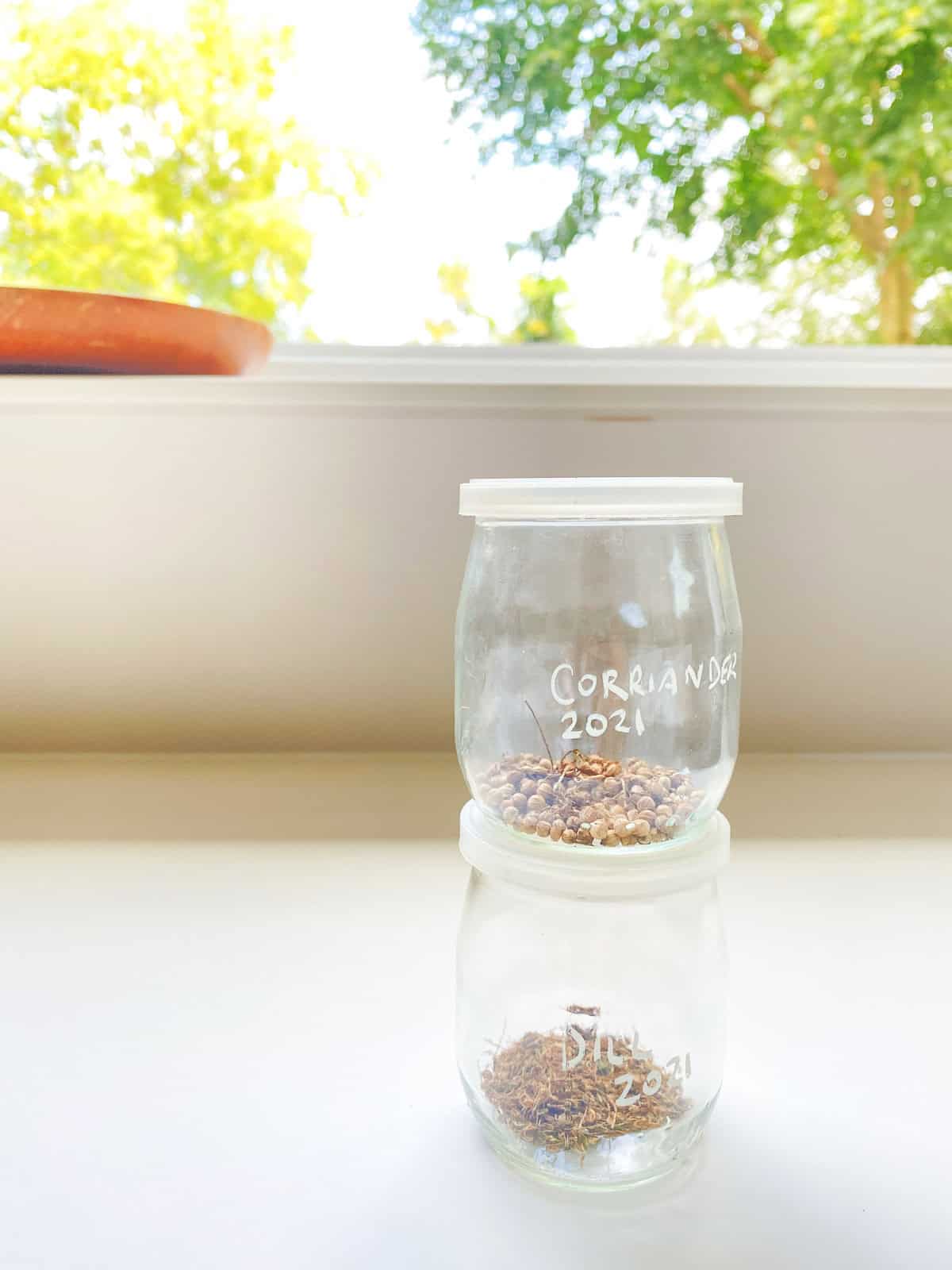
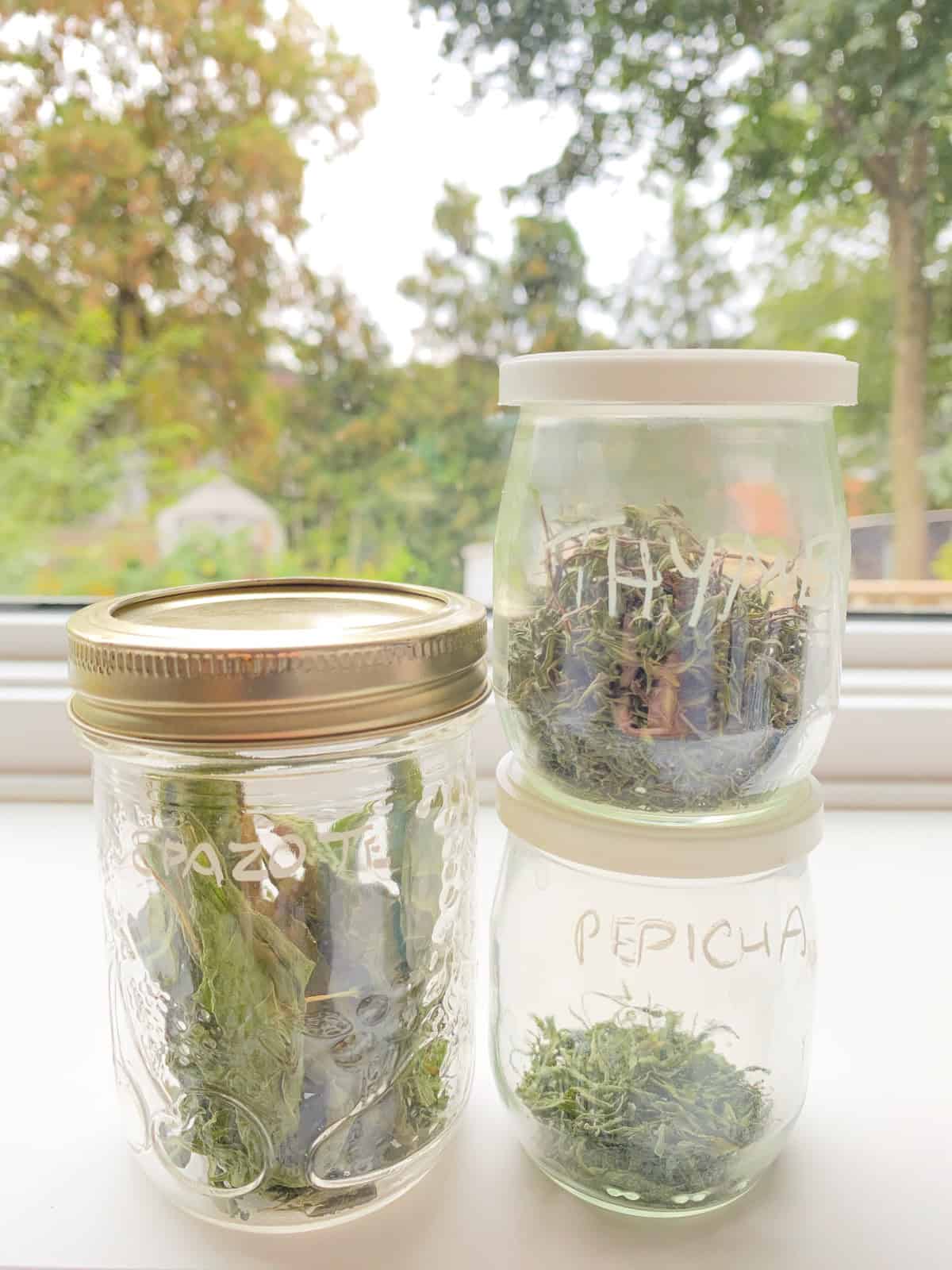
Small jars, such as glass yogurt jars or small canning jars make for well suited storage vessels for dried herbs and seeds.
How to dry fresh herbs
Happily, drying herbs for future use is easily done, and you don’t need masses of herbs to do so. Even the leftovers from a bunch of store bought herbs or a modest harvest from your own garden is worth saving.
Herbs that are slightly woodier, such as rosemary, thyme, and oregano are great candidates for drying, and their flavour seems to be preserved more intensely than parsley or basil for example, which benefit from being preserved in oil, in pestos or purees, or in vinegar. Other softer leafed herbs, such as pepicha, epazote, nepitella, zaatar, marjoram, and some varieties of basil, can be dried with good results.
To dry herbs, simply clip your herbs at the base of their stems - making sure you get the longest lengths possible - and gather them into manageable bunches. If you find your herbs are especially dirty you can choose to wash and dry them first, but to be honest, I never find it necessary, and as my garden is completely organic, I know that a few stray particles of dirt is usually the only thing on my harvests.
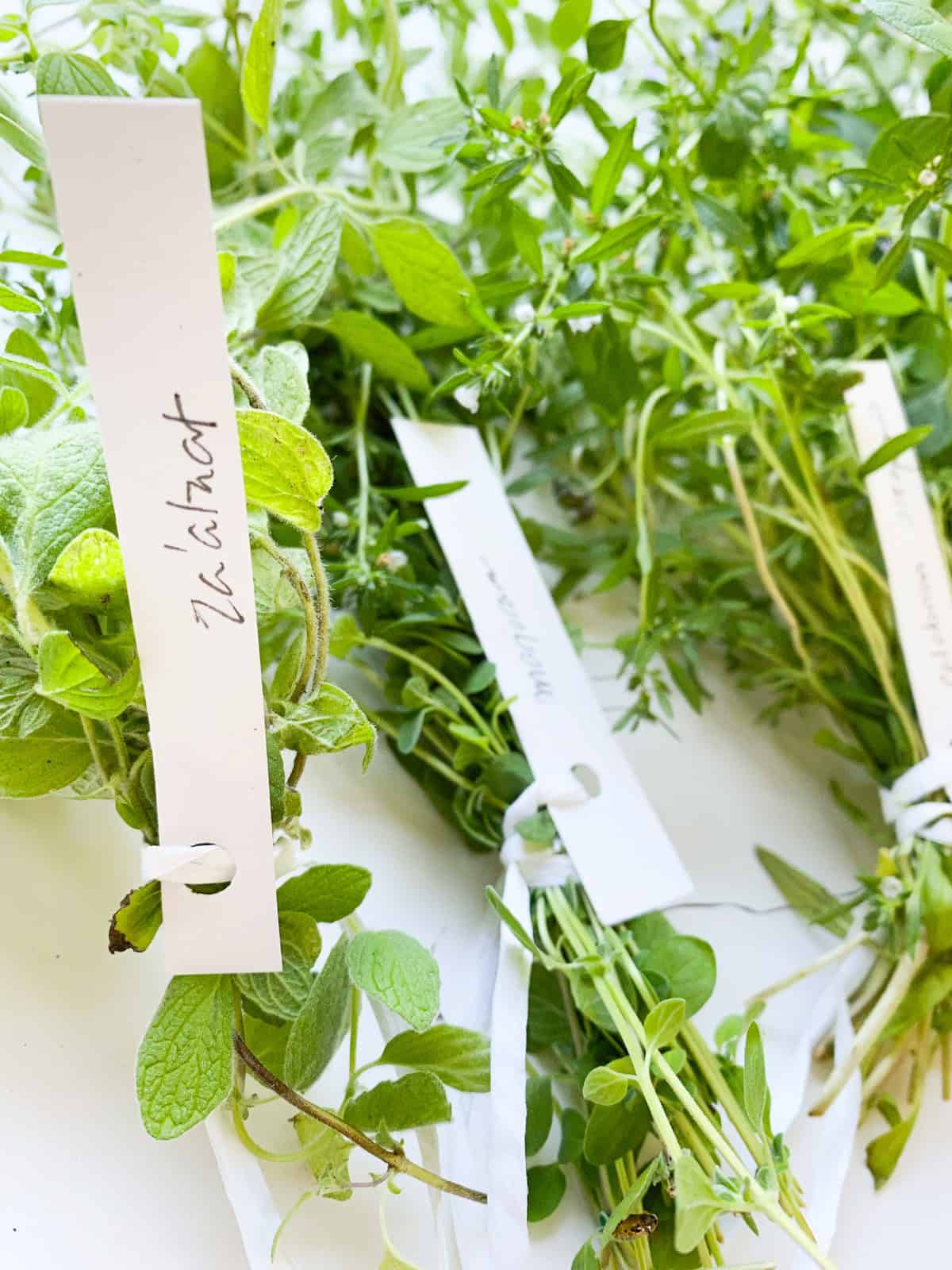
Labelling the herb bunches will help to avoid confusion once the herbs have dried and lost much of their original colour and distinctive leaf shape.
Using paper twine, which can be recycled, or natural jute or hemp twine, which you can later reuse, tie the small bunch at its base as tightly as you can, as once the herbs start to dehydrate you will find the bunch becomes looser, so the tighter to start with, the better. I like to make little tags using scrap paper and a hole-puncher with the name of the herb on it, as once they are dried, many herbs start to look alike and I can’t always tell what something is just by tasting it dried. As you are bunching and tying your herbs you will find yourself immersed in an aura of soothing herbal aromas, an experience itself that is ample reward for your efforts.
Once the bunches are tied, find a dark and dry place to hang the herbs; I simply hang them off a metal storage rack in my basement. Once the herbs are well and truly dried - a dried leaf should crumble between your fingers and be close to crunchy in texture - it’s time to process the dried herbs.
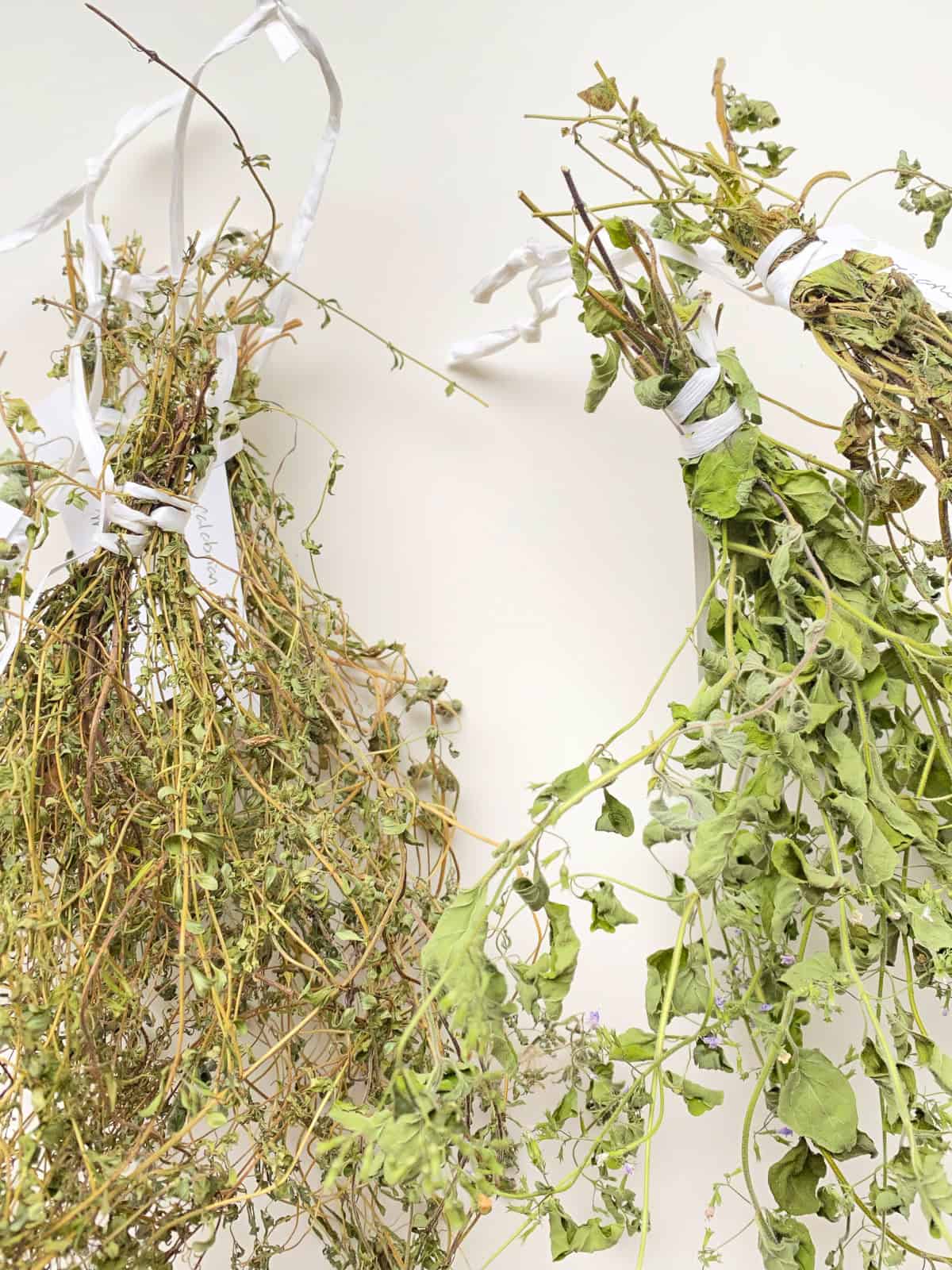
Bundled herbs can be hung and dried anywhere you have room; somewhere out of direct sunlight is ideal.
Lay out a piece of kitchen paper or some other smooth and clean surface and gently shake the bunch over top - quite a bit of the leaves should fall off. Then, just go in and rustle the leaves away from the stems, picking off larger leaves like rosemary from the stem, or even running your fingers along the stems for delicate herbs like thyme. I personally don’t care if small bits of stem get into the mix, but if you wish, you can pick them out until you have a clean pile of dried leaves. Use a clean and dry glass jar to bottle them up, label with the name and date, and store in your dark cupboard.
As an alternate method for drying, you can simply lay your herbs out, well spaced, on a baking sheet and leave them in the oven while it is turned off, to keep the herbs out of sunlight and away from dust etc. After a day or two, the herbs naturally dry, and you can continue with the processing method as described above. Just don't forget to remove the herbs if you have to turn your oven on!
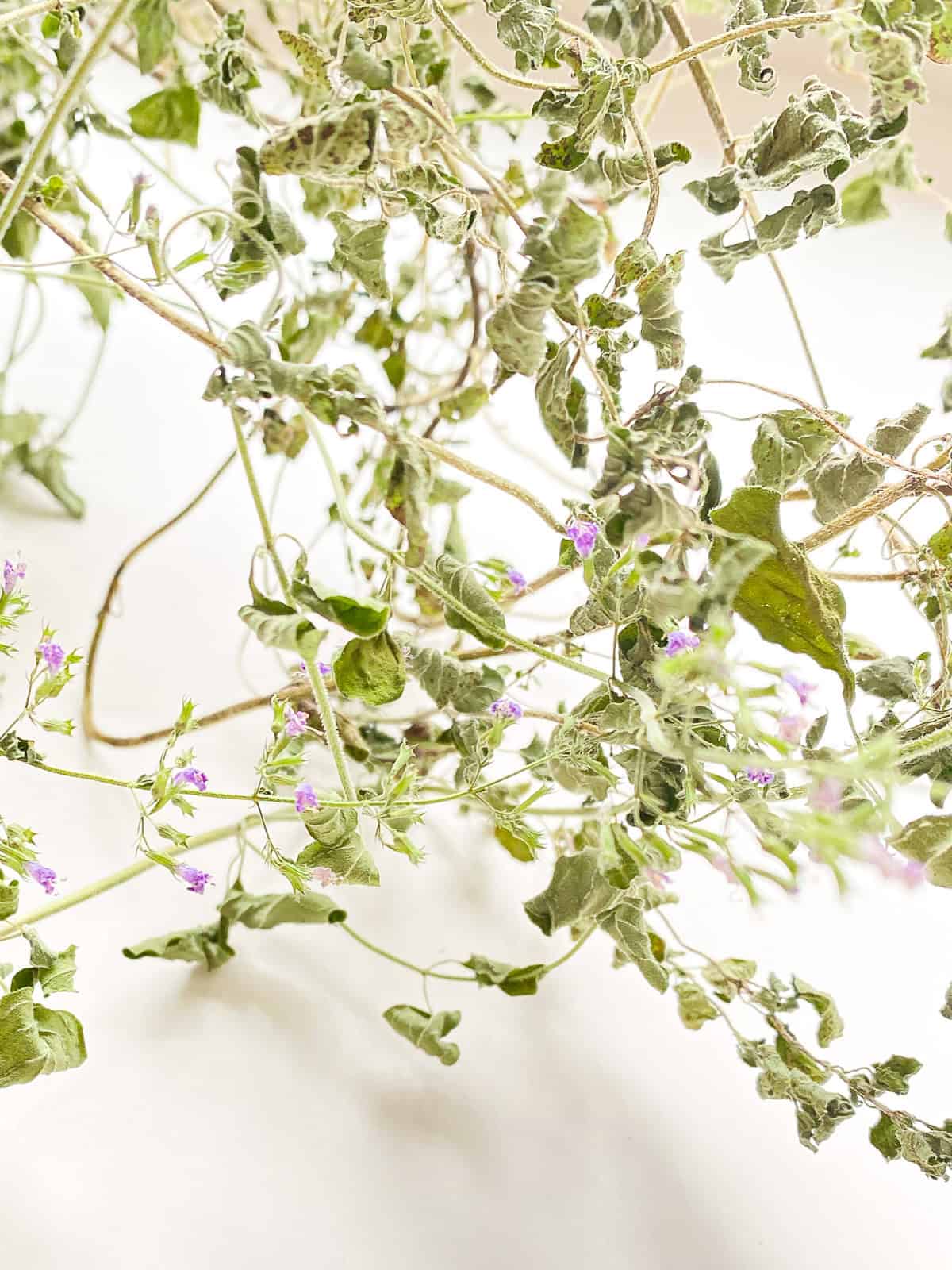
Sometimes dried herbs are also a source of dried flowers as an added bonus!
How to collect and dry edible seeds
Seeds are another generous gift of the edible garden that arrive after the main harvest has been collected if some of the original plant is left to mature. Collected seeds can be used in the kitchen, and as a further bonus, can also be saved for next year's plantings. To date, I have harvested a number of seeds for culinary use from my garden and have had success collecting and drying coriander seeds, fennel seeds, dill seeds, and garlic chive seeds amongst others.
To dry seeds from your own garden, a little bit of patience is needed before the collecting and drying stage. For example, when growing cilantro (also known as coriander), you will need to leave some of the plant to bolt and flower, and then wait until the seeds form and mature. Knowing that I will be collecting cilantro seeds each year, I always plant a bit more than I need, and make sure not to cut all of it down. Once the plump green seeds appear, I leave them on the plant until browned and slightly shrivelled, which signals harvesting time.
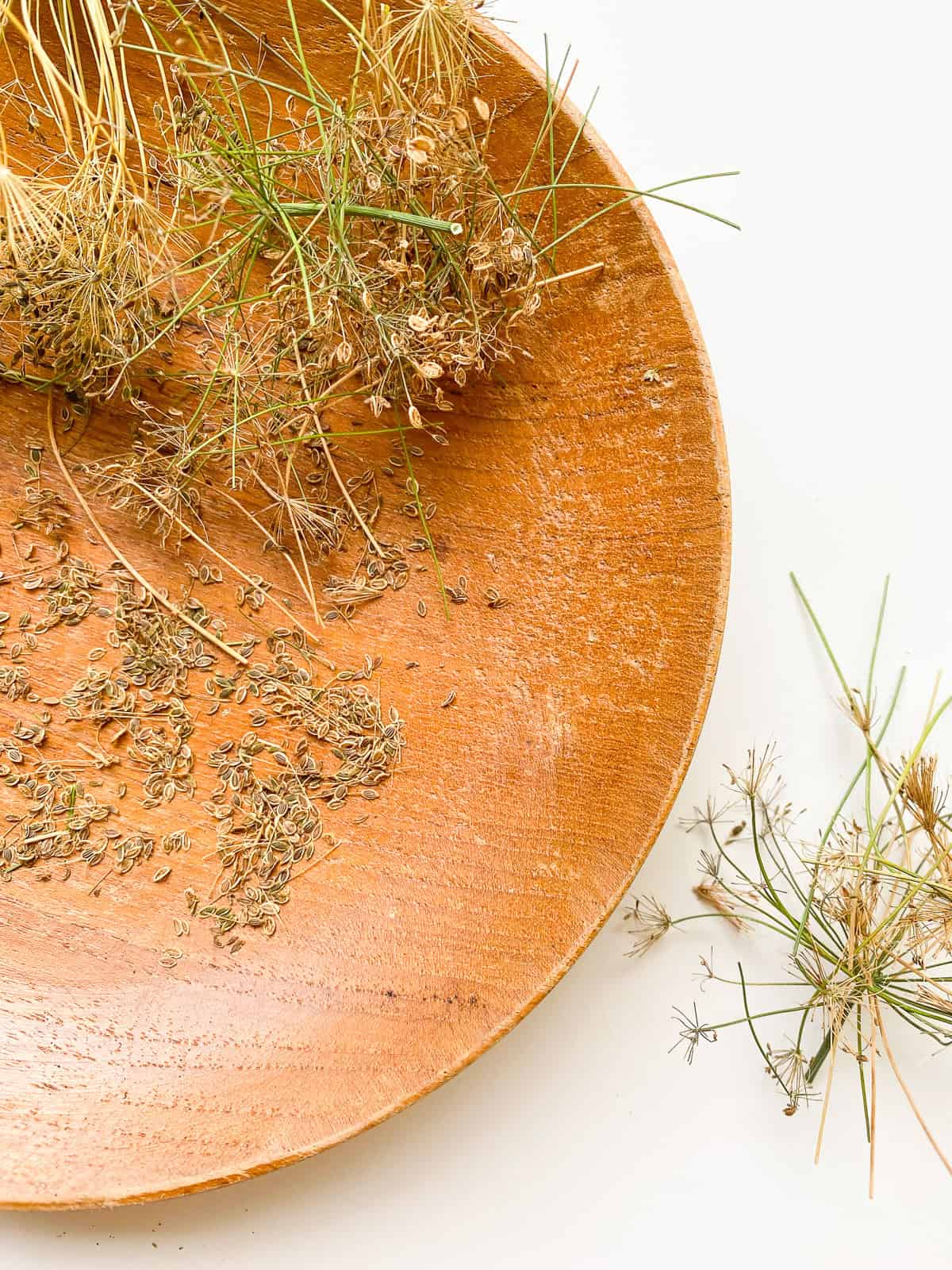
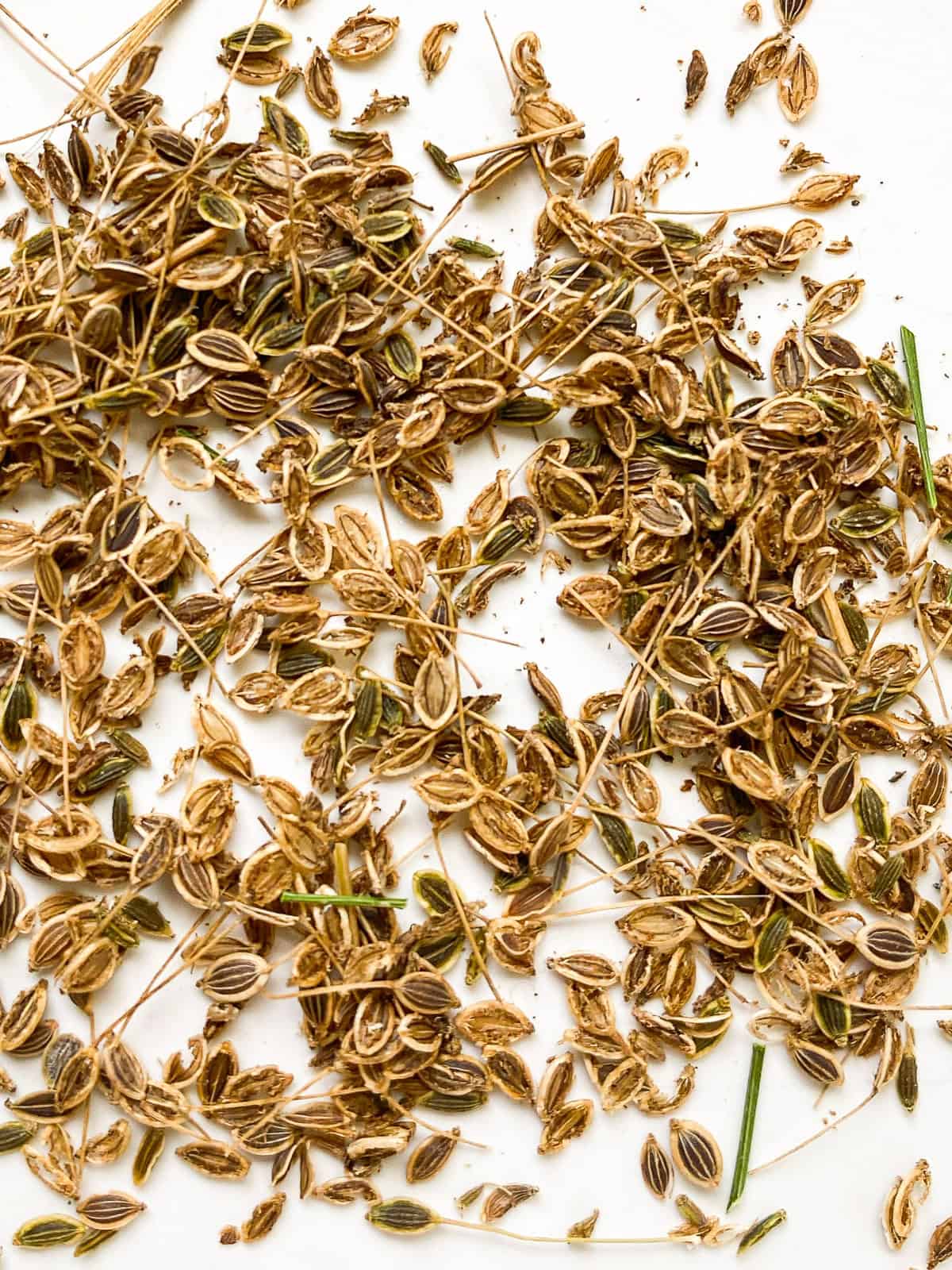
Diminutive dill seeds pack powerful flavour and are well worth saving.
Once your seeds of choice have browned - you will know it is time as they will appear dry-ish, definitely not green, and seem browner in colour - place a small bowl or paper bag under the seed heads and clip using scissors or garden snips.
Once the seeds are collected, they need to be further dried to make sure all moisture has been removed. I usually just leave the seeds to dry for a few days or so on the counter, either in a bowl or spread out on a parchment lined baking sheet.
Once the seeds seem dry to the touch, with no trace of moisture about them or on any attached stems, I follow the same procedure as picking dried herbs, by laying out a piece of kitchen paper or some other smooth and clean surface and gently separating the seeds from their seed heads and attached stems. I use a clean and dry glass jar to bottle them up, label with the name and date, and then store in a dark cupboard. Even if your harvests are quite modest, as mine usually are, they will surely satisfy and delight you when you enjoy your homegrown spices in a special dish in the months to come.
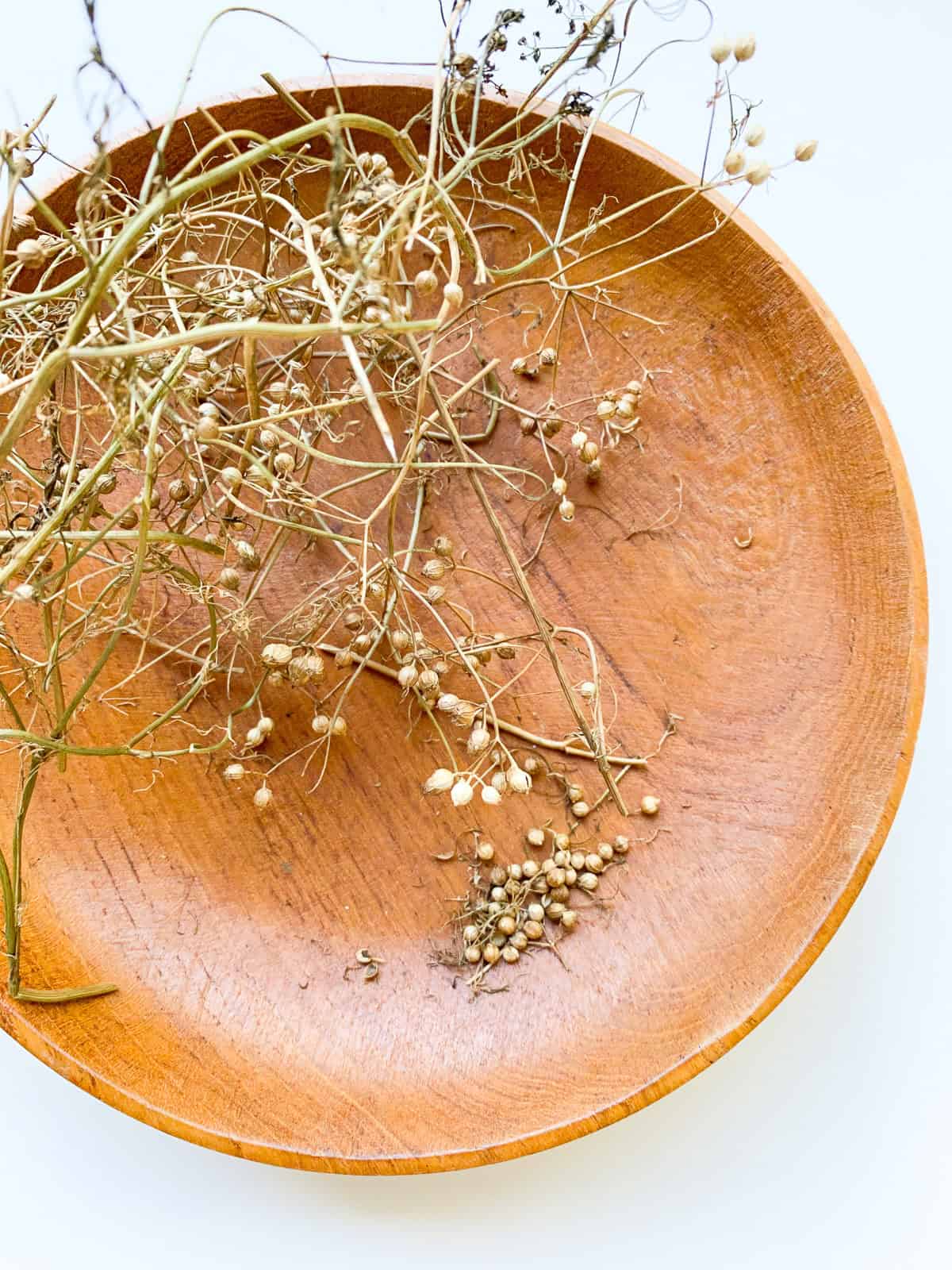

Coriander seeds are my favourite annual seed harvest; the flavour of these freshly harvested and dried seeds is simply superlative.
How to dry edible flowers
While you are in the garden, look for other edible treasures that you may want to dry. I have dried fennel pollen, borage flowers, wild violets, cosmo flower petals, chamomile petals, calendula flower petals, basil flowers, mint flowers, oregano flowers, and garlic chive flowers, amongst many other garden discoveries. Many other plants, from radishes to broccoli, will produce edible flowers that can also be collected and dried.
While edible flowers may not offer much in the way of nutritional value, I have found they certainly bolster the senses and make special dishes that much more memorable. I once used dried flowers from a garden harvest as a garnish on a dessert made for a friend's wedding celebration, a unique and homegrown touch that added to the meaning of the dish and it’s beauty.
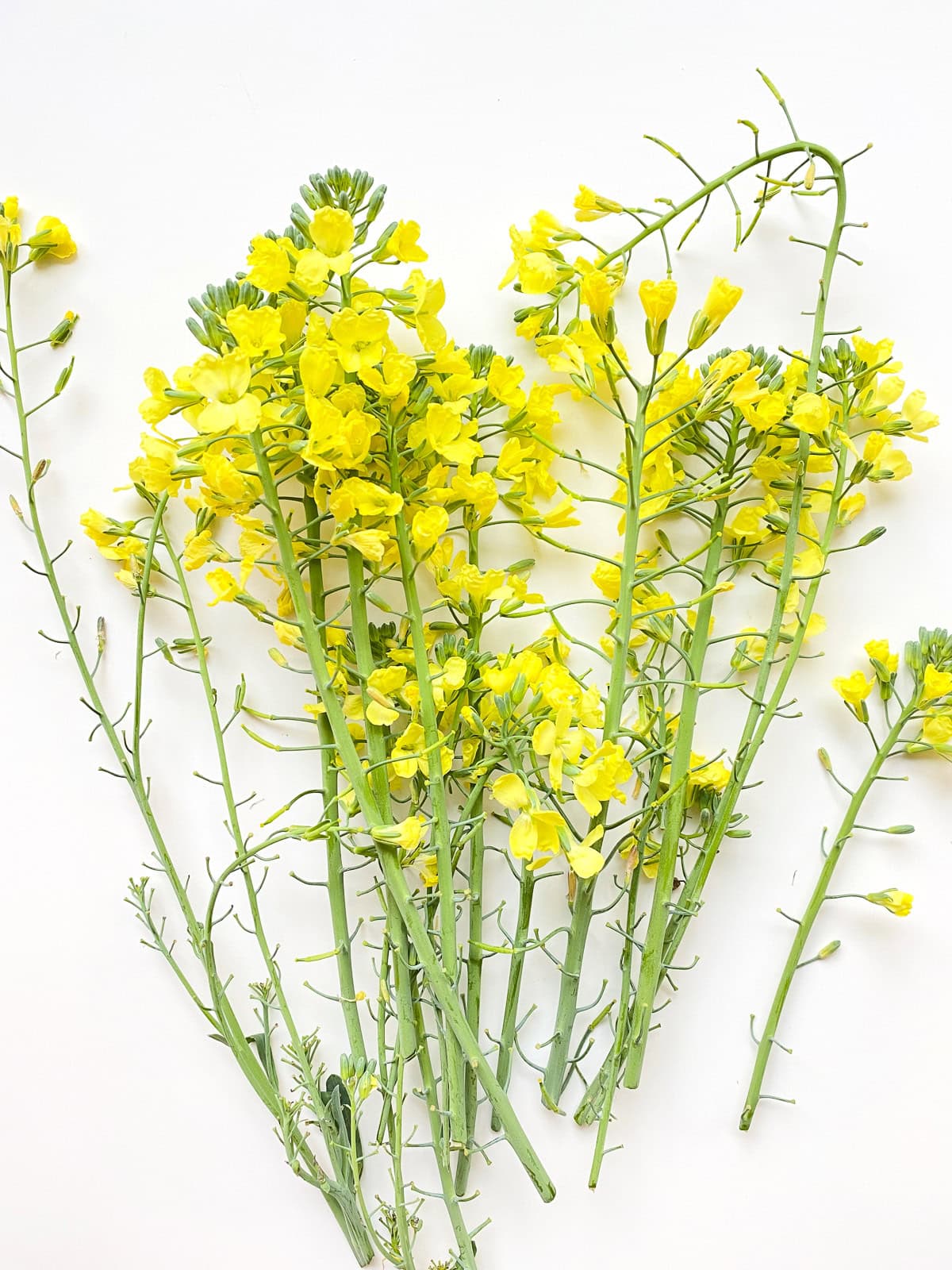
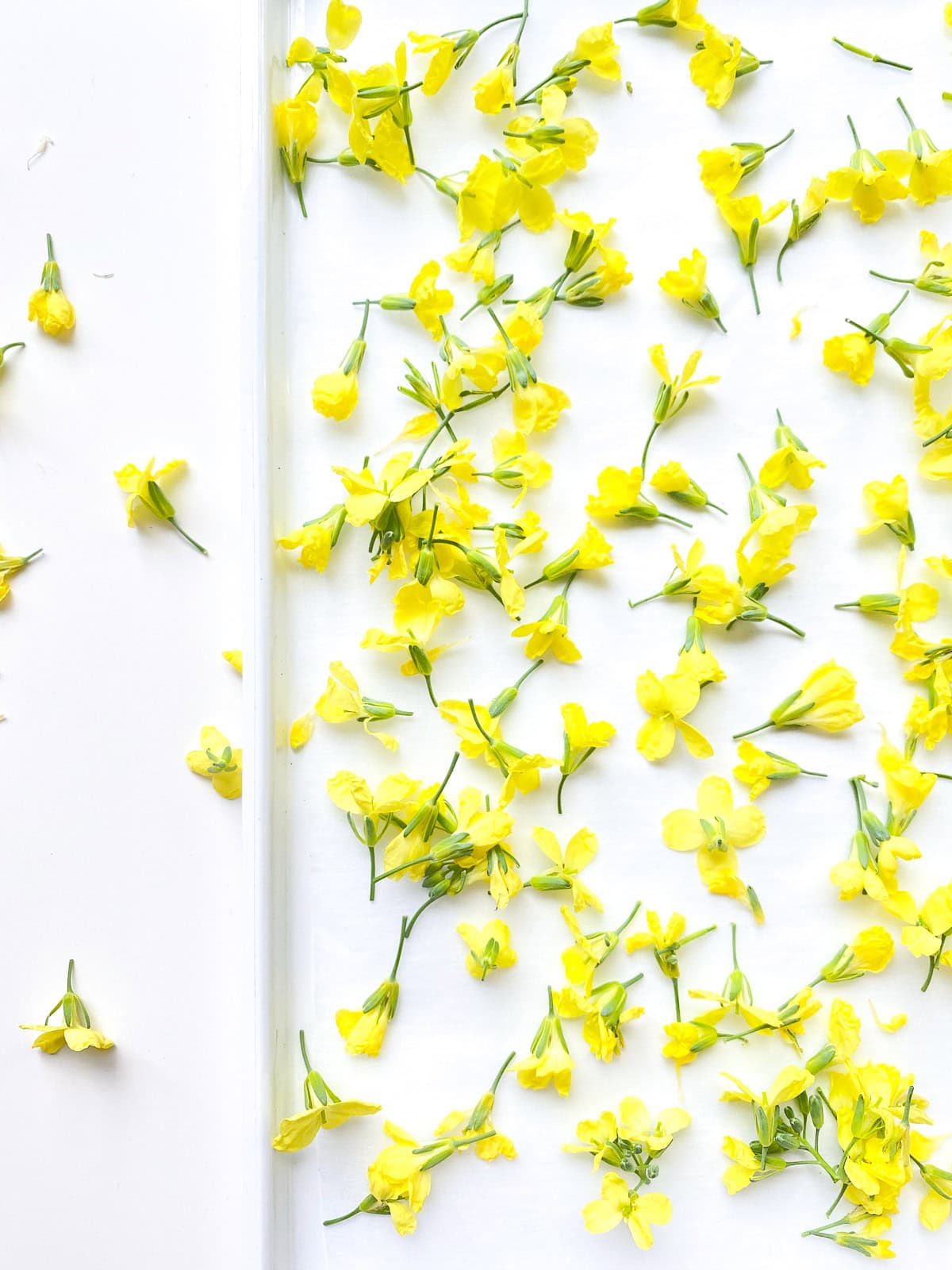
Sometimes flowers come from unexpected places; in this case, from a broccoli plant that didn't form a broccoli head, but instead rewarded me with tasty reams of little yellow flowers.
To dry flowers, I follow a similar process to that of drying seeds. After collecting the flowers, I remove the entire flower from the stem of the plant, and for large flowers, I remove the petals, and discard the rest of the flower head. I lay out the flowers and petals on baking sheet away from direct sunlight and let everything naturally air dry. Once the flowers and petals are dry, with no trace of moisture, I simply collect, jar, and enjoy.
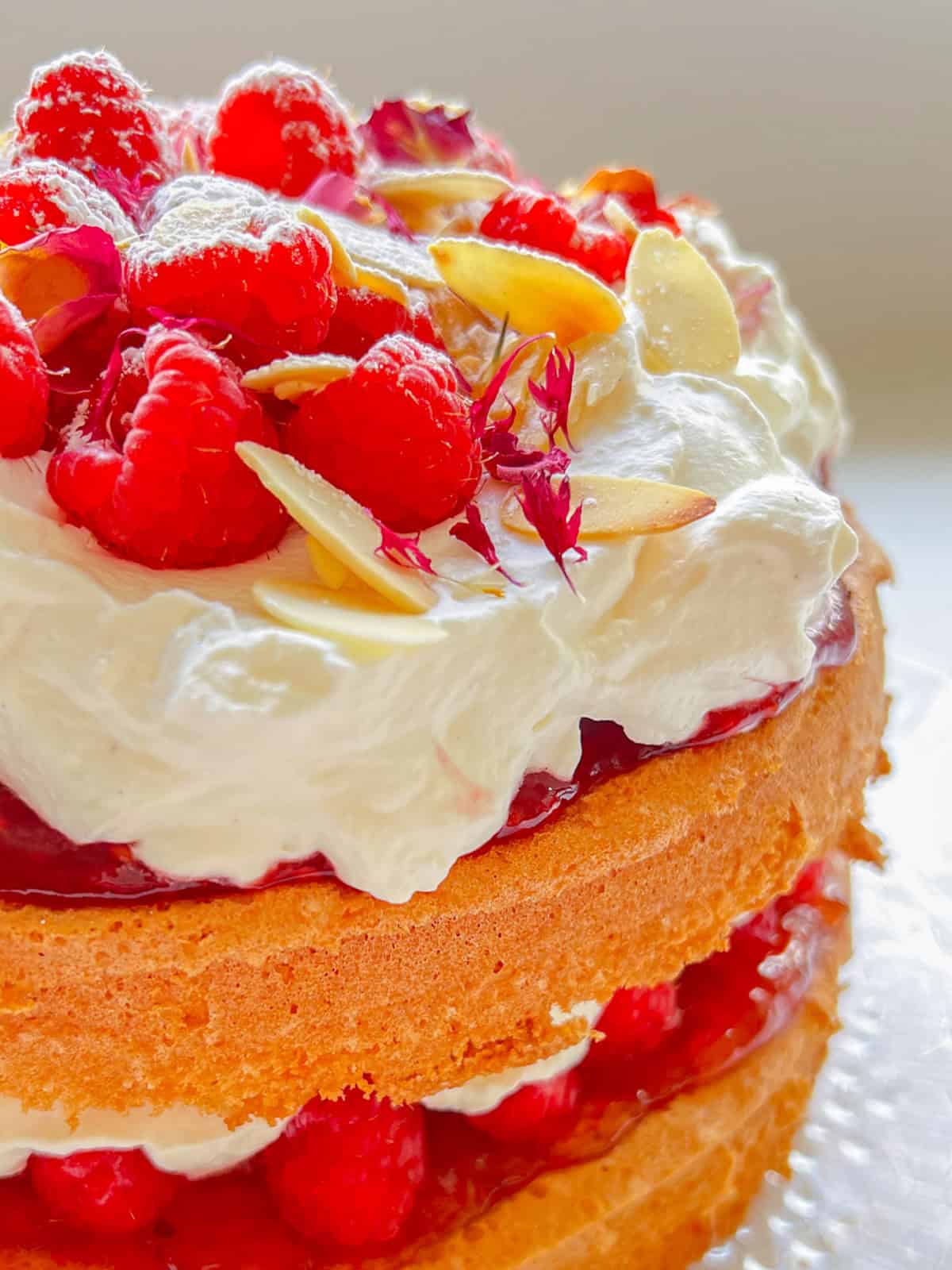
A special celebration cake is made all the more unique by the addition of flowers collected and dried from the garden.
If you're ready to daydream about which herbs to grow next year, my current favourite herb seed vendors are Farmacie Isolde, West Coast Seeds, and Richters Herbs.

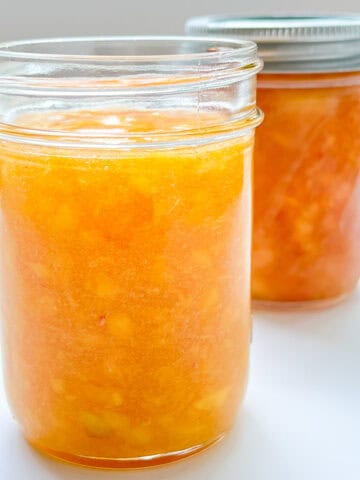
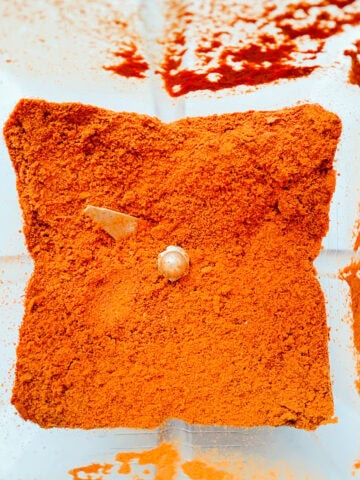
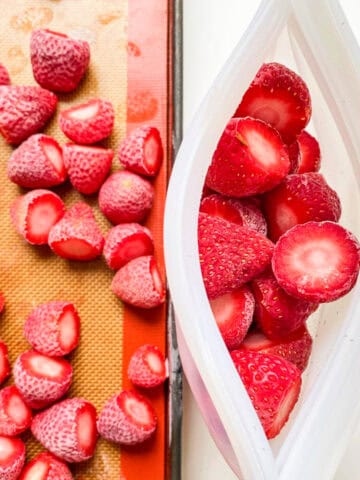
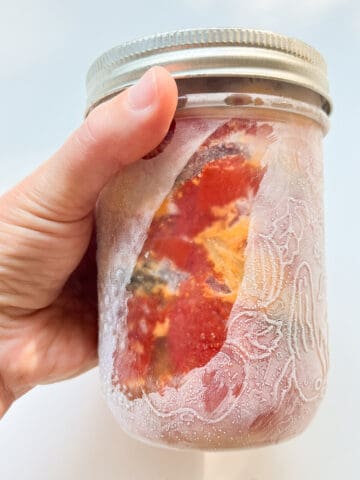
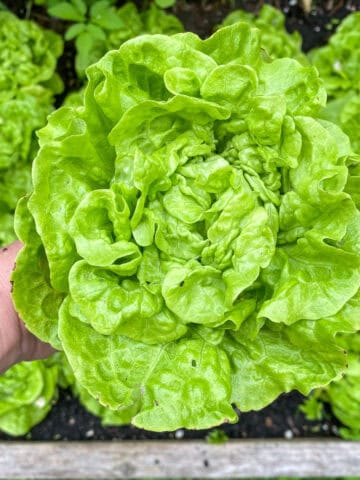


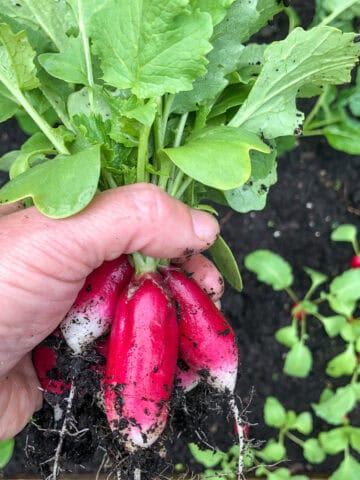
Rosie Jeffares says
Your florist neighbour certainly agrees that dried edible flowers made a meaningful garnish! Your food was unforgettable - beautiful and delish'.
daraeats says
Thank you Rosie! (and I'm sorry I didn't reply to this sooner!)